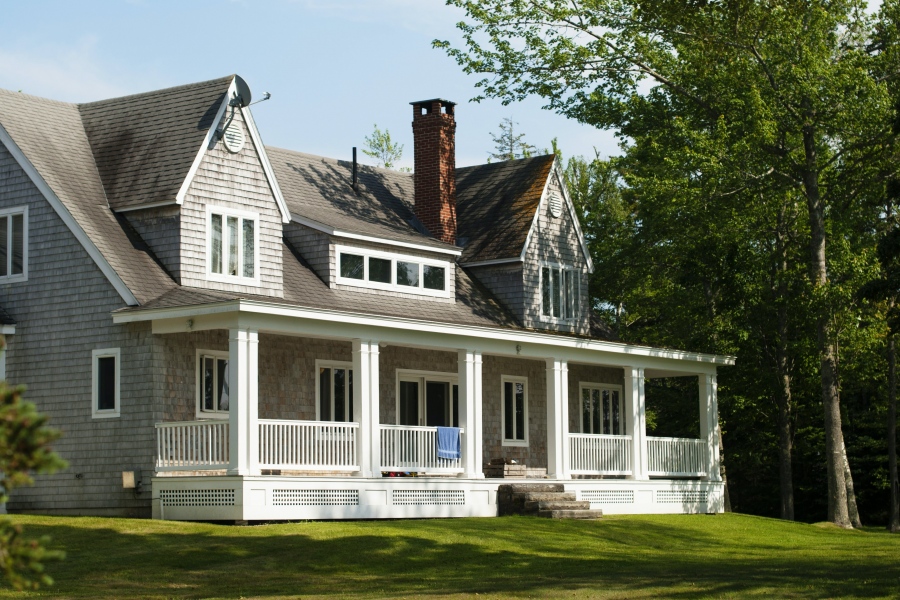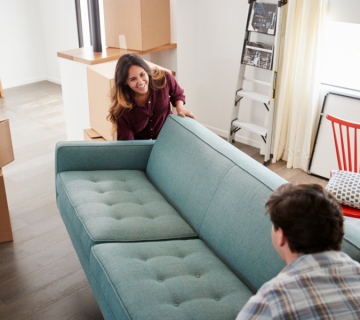Whether you’re suffering from a leaky home or want a new external look for your home, an exterior wall cladding might be a good investment for your house.
When it comes to homes, you will need a building consent application. And this comes with a series of inspections before you can continue recladding. Thus, before you choose your cladding option, make sure that you’ve managed all the paperwork and logistics of a recladding.
But once you’ve managed everything, you can start improving your exterior wall cladding soon enough.
Of course, it’s always a good idea to choose a cladding option before operations begin. To help you find the best exterior wall cladding for you, here are the eight most exceptional house cladding options that you can consider.
1. Brick wall cladding
One of the most popular choices of exterior wall cladding would be a brick wall cladding, and for a good reason. Brick wall cladding offers a unique design that works for many homes when it comes to aesthetics.
The brick design alone is already an appealing look, so you don’t need to cover it up with paint if you don’t want to do that.
Aside from looks, they also have an excellent return on investment for people who want brick wall cladding. Of course, there are also a few cons to this.
One issue with a brick wall cladding is that you’ll need a professional to ensure that they lay the bricks correctly. That’s because, according to Service Pros Recladding Auckland, brick wall cladding can take up quite a bit of floor space, especially if you’re using the thicker ones.
2. Timber Clad Houses and Wall Cladding
Another fantastic option for your house cladding would be the use of timber cladding. It’s gaining quite a bit of popularity because it adds a unique and natural look to homes. Plus, if you want to paint them, they’re easy to paint.
Another pro to timber cladding is that it’s eco-friendly. If you ever get your timber wall cladding damaged, the wall cladding is easy to repair.
One issue with timber cladding is that, if you want it to maintain its looks, you need to do it regularly. It requires a bit of work from you from protecting it from pests to repainting and restaining it.
3. Lightweight Brick Finish Cladding
If you want to have the visual appeal of brick cladding but not the cost, you might want to consider lightweight brick-finished cladding.
It has a wide range of textures, patterns, and colors for choosing from and fitting the theme of your home. Plus, lightweight brick finish cladding is quite energy-efficient.
But since they’re lightweight, they might not be as durable as your usual brick cladding. So you have to be aware of your home’s weather conditions.
4. Fiber Cement Wall Cladding
Fiber cement wall cladding is a humble and stoic cladding option that many homeowners who want a no-frills cladding option can choose.
It is durable and can protect your home from all sorts of issues. This includes mold, rot, wind, etc. Since it’s quite durable, it will also last in your home for quite a long time.
Bit the issue that comes with fiber cement wall cladding is that you have few insulation options when you have it. Aside from that, it requires quite a bit of workforce to install.
And since it’s heavy, not all homes can have fiber cement wall cladding.
5. Aluminium Architectural Cladding
The aluminum architectural cladding has many benefits. It’s lightweight but durable. Plus, it doesn’t cost a lot of money to install.
Another pro is that it’s eco-friendly and requires minimal maintenance.
Of course, the cons are that it can be quite noisy when it expands and contracts due to temperature changes. It’s also prone to minor dents and scratches since it’s a soft metal.
6. Hardwood Fiberboard Cladding
You can find similar benefits between hardwood fiberboard cladding and timber cladding for your home. It’s durable, eco-friendly, easy to repair when it gets damaged, and offers a timeless look.
It also requires constant maintenance to maintain the look. The installation process also costs a lot more, especially since it’s hardwood.
7. Vinyl Wall Cladding
For people looking for affordable cladding options, vinyl wall cladding might be an attractive option.
It’s an inexpensive option and doesn’t need a high level of expertise to install. Aside from that, you also don’t need to paint over it. In the long run, it’s also pretty low maintenance.
But there are some disadvantages you should know about.
The biggest drawback to vinyl wall cladding is that it can lower your home’s value when you get it installed. Another disadvantage is it’s not the most sustainable option out there.
8. Natural Stone Cladding
Natural stone cladding is one of the most beautiful house-cladding options out there. Its beauty is long-lasting and quite durable. Plus, it will increase the value of your home.
But this beauty comes with a price, and it can be a heavy one.
Since it’s a natural stone, it requires intensive labor to install. Plus, the material itself is quite costly compared to other options on this list. If you use the wrong cleaning product, you might even damage it.
Thus, if you get this cladding option, you need to prepare quite a bit.
Conclusion
Your exterior wall cladding is a significant part of your curb appeal, so you might want to choose the best option.
There are many options available out there, each with their pros and cons. Before making a decision, make sure that you weigh those options out.
That way, you get a satisfactory result from your result of exterior wall cladding.




